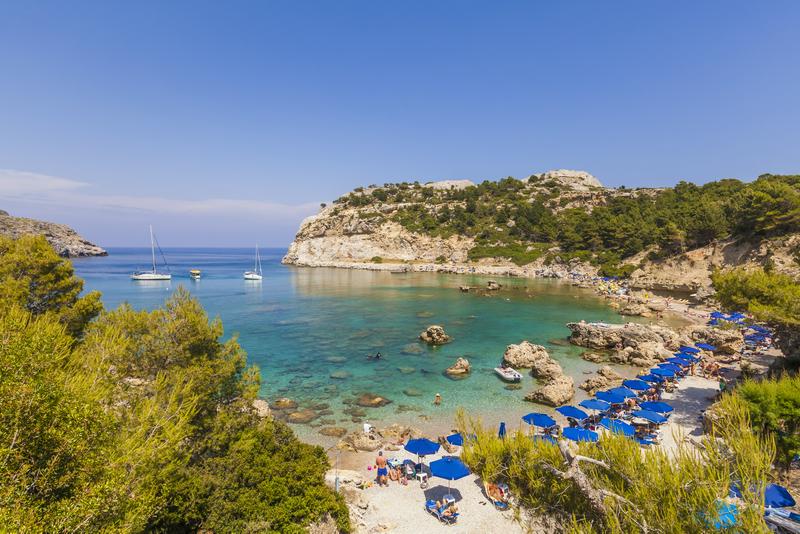The Colossus at Rhodes
By | July 4, 2019

Situated along the southern boundary of the Aegean Sea, the island of Rhodes is widely known for its beaches, charming towns, and abundance of shops and restaurants catering to tourists from around the world. For ancient history buffs, on the other hand, the island is synonymous with one of the Seven Wonders of the Ancient World, the Colossus of Rhodes.

Rhodes
Due to its advantageous position along numerous trade routes between ancient Mediterranean civilizations, the island of Rhodes quickly grew to economic and military prominence. Nominally aligned with Athens during the Peloponnesian Wars, the island successfully maintained neutrality in the conflict and continued to grow more populous and prosperous.
In 408 BCE, the main settlements on the island united and began construction on the city of Rhodes—a planned town that would allow for expanded commerce and more formalized civic and governmental institutions. The grand city had extensive sewage and water systems, a deep harbor, and a thriving commercial sector.
Rhodian success drew attention and ire from its larger rivals on the Anatolian mainland, and it was invaded first by its immediate neighbor and then the expanding Persian Empire in the middle of the 4th century BCE. By 332 BCE, Alexander the Great conquered Rhodes, and it remained a thriving Macedonian port until his death nearly 10 years later.
During the dissolution of the Macedonian Empire, Rhodes remained aligned with Ptolemy’s Egypt. This union allowed for near-complete dominance of trade between the Aegean and Eastern Mediterranean, and Rhodes reached new heights of prosperity, advancement, and power.

Antigonus and the Great Siege
One of Alexander’s most trusted generals, Antigonus Monophthalmus, retained control of a large swath of the empire in what is today Turkey and Syria, forming the Antigonid Kingdom. Other advisors and claimants also rose to rule sections of the dissolving empire that once stretched from Greece to India, and each thought of themselves as the rightful heir to Macedonia’s expansive territory.
The Diadochi Wars, or the Wars of Alexander’s Successors, were conflicts that engulfed this region for half a century as the competing claims and disputed boundaries led former colleagues to take up arms against one another.
The Antigonids, in coalition with several of the successors, succeeded in expanding their territory but grew increasingly suspicious of Ptolemy and Rhodes---which, while still neutral, had amassed a strangely large navy.
Wary of Rhodian power and their control of regional trade, the Antigonids invaded in 305 BCE with hundreds of ships and 30,000 soldiers. They besieged Rhodes and attempted to blockade the city’s harbor but failed to completely surround the city. After a year of heavy fighting and many attempts to storm the city, the Antigonids relented and signed a peace treaty with Rhodes.

The Colossus
To celebrate their victory against such overwhelming odds, the Rhodians commissioned a massive statue of Helios, the sun god, at the entrance to their thriving harbor. Construction took 12 years, and sources claim that much of the material came from abandoned Antigonid weapons. It rose more than 100 feet tall, roughly the height of the Statue of Liberty, and was the tallest statue in the ancient world.
Contrary to popular conception, the Colossus did not stand astride the harbor—contemporary engineers and materials could not have managed the weight—but likely on a large platform near the entrance, the exact location of which remains disputed. Despite its size and significance, the statue only stood for 54 years. It was destroyed by an earthquake in 226 BCE and was not rebuilt.

The valuable bronze shell and iron skeleton of the statue were likely sold or recycled, and little remains to guide archaeologists in their inquiries. Today, the harbor of Rhodes is still bustling. Cruise ships, ferries, pleasure yachts, and fishing boats still ply the waters, but its famous statue is only a memory.

